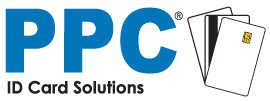Back in 2001, Malaysia unveiled the MyKad, a dual interface ID card, which at the time was the first of its kind. The project utilised innovative and cutting-edge technology pioneered by Unisys.
What can we learn from Malaysia’s successful multi-purpose ID cards, and how can you apply these lessons to your own workplace?
What is MyKad?
All Malaysian citizens 12 years and over are eligible for a MyKad (those 12 and under receive a MyKid).
The dual interface smart card utilises both contact and contactless technology, while incorporating public and private sector functions.
It also employs advanced chip and biometric technology, which allows its users to seamlessly navigate government and private sector transactions.
The card embodies a range of different roles. It is both the national identification card and a driving license. It also acts as a travel document when travelling domestically and between a select few neighbouring countries.
MyKad is also integrated within the national healthcare system – it stores medical records, offering quicker access to information in times of emergency and during routine treatments.
E-cash facilities are incorporated through a reloadable cash purse, which is accepted at a range of outlets such as government agencies and petrol stations. Further, it incorporates Malaysia’s Touch’n’Go technology, which allows it to make payments to toll booths and within public transport systems.
Finally, it can also function as an ATM card at designated banks.
MyKad is a major part of Malaysia’s e-government and e-commerce strategies. The multi-purpose card is a testament to the possibilities of smart partnerships between government and private sectors.
How has it changed the face of ID cards?
According to Unisys, the aim of the government roll out was to equip over 26 million Malaysians with the MyKad. The number of receivers makes this one of the largest government adoptions of smart cards in history.
Although there have been earlier uses of smart cards, such as in Singapore, Hong Kong and Europe, the combination of sheer scale and multifaceted design make the MyKad a quality smart card solution.
By expanding smart cards to include a range of functions, Malaysia has shown innovation and technological prowess. Importantly, the smart card is being upgraded all the time through new features and components.
For instance, a new addition to the card records the data of agriculture business, allowing for quick access to business licenses and past transactions.
In 2001, Malaysia became world leaders in smart card use. But there are smaller and more practical ways businesses and government agencies can incorporate smart cards.
How can you take a leaf out of Malaysia’s book and include smart cards in your business enterprise?


